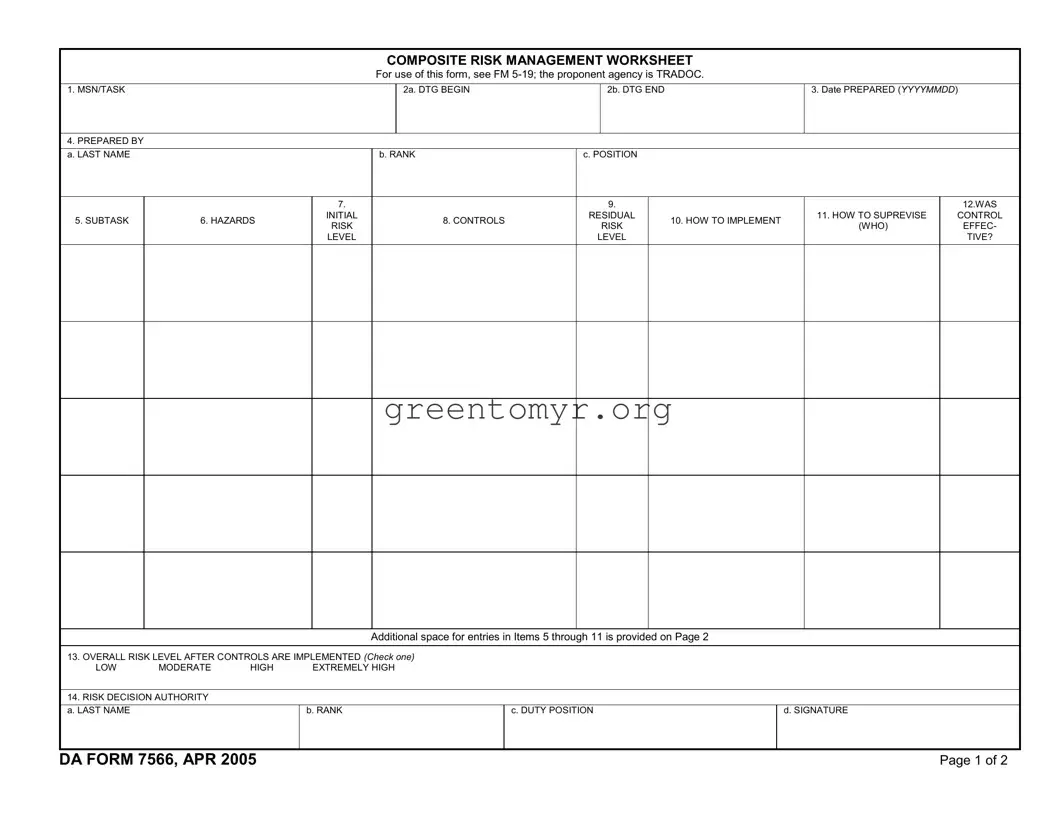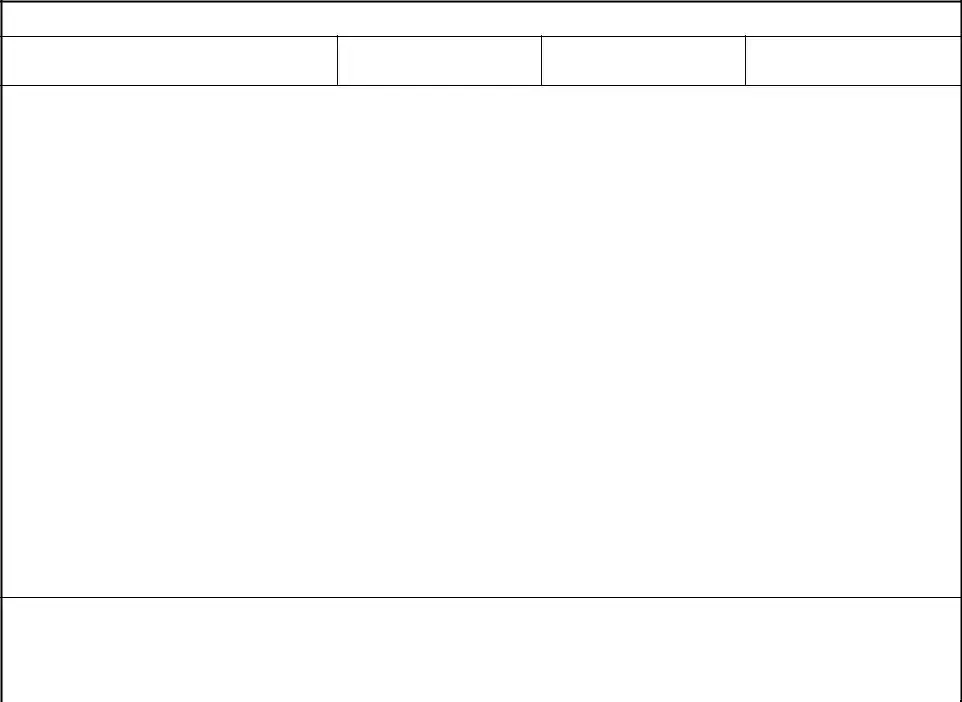All entries explained below are for electronic or typewrite completion. If computer or typewrite is not available, print in black or blue-black ink insuring
a legible image on all copies. When space for a particular item is insufficient, insert “see addendum” and continue the information on a separate page.
ITEM 1 THROUGH ITEM 4. Self Explanatory
ITEM 5. Subtask relating to the mission or task in block1.
ITEM 6. Hazards – Identify hazards by reviewing METT-TC factors for the mission or task. Additional factors include historical lessons learned, experience, judgment, equipment characteristics and warnings, and environmental considerations.
ITEM 7. Initial Risk Level– Includes historical lessons learned; intuitive analyses, experience, judgment, equipment characteristics and warnings; and environmental considerations. Determine initial risk for each hazard by applying risk assessment matrix. Enter the risk level for each hazard.
ITEM 8. Controls – Develop one or more controls for each hazard that will either eliminate the hazard or reduce the risk (probability and/or severity) of a hazardous incident. Specify who, what, where, why, when, and how for each control. Enter controls.
ITEM 9. Residual Risk Level– Determine the residual risk for each hazard by applying the risk assessment matrix. Enter the residual risk level for each hazard.
ITEM 10. How to Implement – Decide how each control will be put into effect or communicated to the personnel who will make it happen (written or verbal instruction; tactical, safety, garrison SOPs, rehearsals). Enter controls.
ITEM 11. How to Supervise (Who) – Plan how each control will be monitored for implementation (continuous supervision, spot-checks) and reassess hazards as the situation changes. Determine if the controls worked and if they can be improved. Pass on lessons learned.
ITEM 12. Was Control Effective – Indicate "Yes" or "No."
ITEM 13. Overall Risk Level – Select the highest residual risk level and circle it. This becomes the overall mission or task risk level. The commander decides whether the controls are sufficient to accept the level of residual
risk. If the risk is too great to continue the mission or task, the commander directs development of additional controls or modifies, changes, or rejects the COA.
ITEM 14. Risk Decision Authority – Signed by the appropriate level of command.



